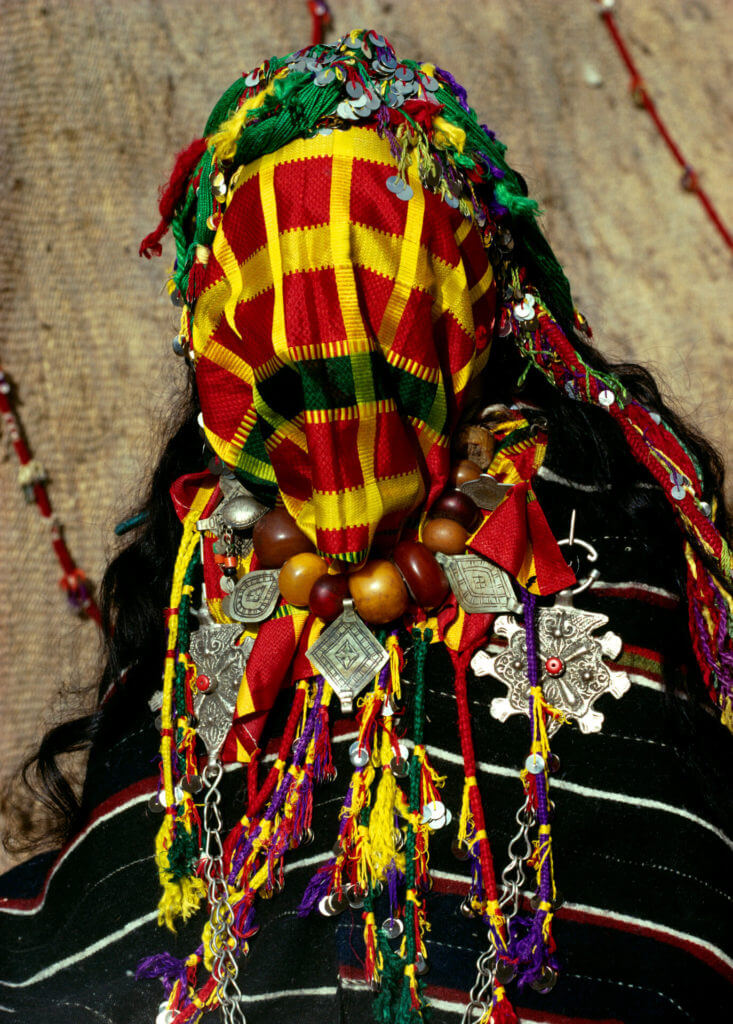
Berber Brides and Hassania Veil Dance

In north Africa, the Ait Haddidou Berber inhabit the Maghreb, known as “The Land of Milk and Honey”, which includes Morocco, Algeria and Tunisia. Their neighbours, the Hassania, who trace their descent to the Berber, live in south Morocco, Mauretania and the Sahara Desert.
Both groups adopted Islam in the 8th Century but held onto their traditional beliefs. Their songs and dances are vibrant and full of magic and pay tribute to the 51 spirits of the earth that support life. Ait Haddidou Berber women often choose their own husbands, a rarity in the traditional Muslim world, where marriages are strictly arranged. Unlike most Arab women, they never veil their faces, except during rituals of marriage.
Once a year in the High Atlas Mountains, the Ait Haddidou Berber gather at the Moussem of Imilchil – known as the Brides Fair. This is a meeting place for widows and divorcees to find new marriage partners and for virgin girls to find their future husbands.
The fair is filled with mingling mysterious cloaked women with pointed hoods which indicate that they are either widowed or divorced and looking for husbands. A woman will only open her veil when she is approached by a man she desires. If the suitor touches her hand and says “You have captured my liver” (the Berber organ of love) and she replies “You have caught mine too” the couple may instantly formalise their vows. Virgin girls, conspicuous by their rounded hoods and with cheeks rouged for beauty also attract future partners at the fair. In this case they require a year long courtship before marriage, following the initial payment of the dowry.
Courtship practices for the Hassania focus on the Guedra, the ritual dance of love. Performed at weddings, the Guedra is a ballet of hands and feet danced by women for the benefit of men. Completely cocooned in indigo veils, the dancers sway to the hypnotic drum beat and the shrill ululation of women. With feminine grace and seduction, they attract the male eye through the rhythmic movements of their beautifully hennaed hands and feet.
For both the Berber and Hassania, the combination of feminine beauty, magnificence of adornment, and mysterious veiled presentation are all important components of courtship.

In north Africa, the Ait Haddidou Berber inhabit the Maghreb, known as “The Land of Milk and Honey”, which includes Morocco, Algeria and Tunisia. Their neighbours, the Hassania, who trace their descent to the Berber, live in south Morocco, Mauretania and the Sahara Desert.
More...
In north Africa, the Ait Haddidou Berber inhabit the Maghreb, known as “The Land of Milk and Honey”, which includes Morocco, Algeria and Tunisia. Their neighbours, the Hassania, who trace their descent to the Berber, live in south Morocco, Mauretania and the Sahara Desert.
More...
